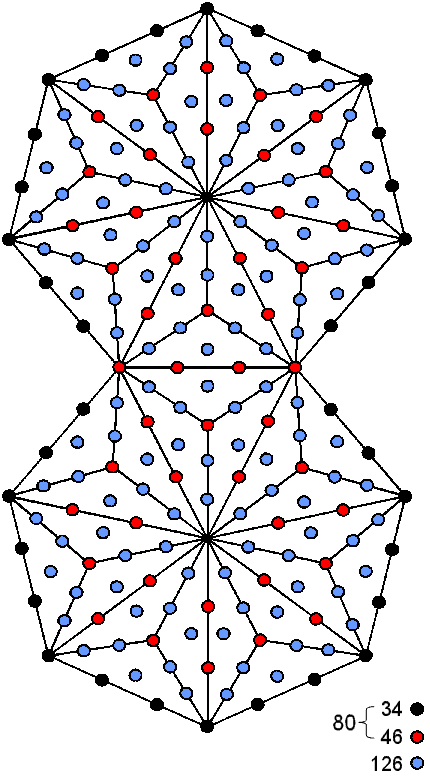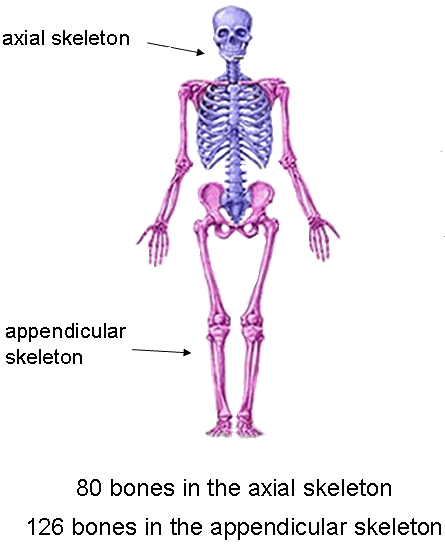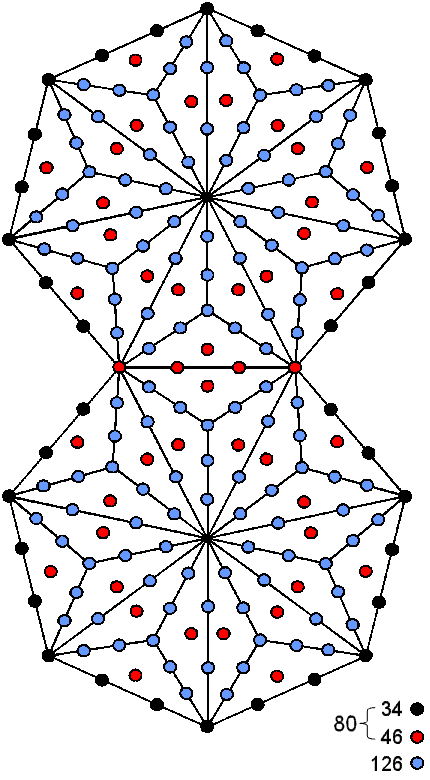


(a)
(b)
| << Previous 1... 7 8 [9] 10 11 ...39 Next >> |
#9 Two joined Type B heptagons embody the 206 bones of the human skeleton
|
|
 |
|
|
(a) |
(b) |
Although not a polygon of the inner Tree of Life, the heptagon encodes information about holistic systems, as we saw in Maps of reality. A Type B heptagon has 106 yods. 102 yods are outside any side it shares with another Type B heptagon, so that the number of yods in both joined heptagons = 102 + 106 = 208. They have 206 yods surrounding their centres. This is the number of bones in the human skeleton! (See #4 in this section). A geometrical symbol of the number 7, which has always been a sacred number in many religions, the heptagon (or, rather, two joined heptagons) represents the skeleton of humans. The 34 black yods lining the 12 sides of the two joined heptagons outside their shared side symbolize the 34 single bones of the axial skeleton. When the heptagons are Type A, they have 80 yods surrounding their centres when joined together. This is the number of bones in the axial skeleton. The 46 red yods in (a) symbolize the 46 bones in it that are arranged in pairs. The two sets of 63 blue yods added by converting the heptagons from Type A to Type B denote the 63 pairs of bones in the appendicular skeleton. The pair of heptagons in (b) show an alternative association between yods and bones. Three red yods have to be contributed by each of their sectors. This can occur in two ways: in (a) they are the red yod at the centre of each sector and the two red yods on the internal sides of sectors; in (b) they are the red hexagonal yods at the centres of the three tetractyses in each sector.
The question of which pattern is the correct one does not need to be answered here, as the proof that the pair of heptagons encodes the bones of the human skeleton has been given, and its validity is not dependent upon which pattern is chosen. However, case (a) corresponds better to the pattern of bones in the human skeleton because the transformation of heptagons from Type A to Type B, in which 63 pairs of yods are added, corresponds to the distinction between the axial and appendicular skeletons — a feature that is absent in case (b). Hence case A is the more natural geometrical basis for the human skeleton.
| << Previous 1... 7 8 [9] 10 11 ...39 Next >> |